When walking into a chocolate shop, we hear a lot of different words— bonbon, praline, truffle, ganache, etc.— but they all have one thing in common: chocolate. All these confections contain some amount of chocolate, either white, milk, dark, or ruby.
I actually used to think they were all called truffles when I was a kid, because that was the term my mom used for anything chocolate & round. So what are bonbons? Are bonbons the same as truffles?
And how do you know which type of chocolate you're looking at just by, well, looking? This article is to clarify the most commonly-confused terms in chocolate shops the world over, from 'what is a bonbon' to the range of fillings found in chocolate pralines.
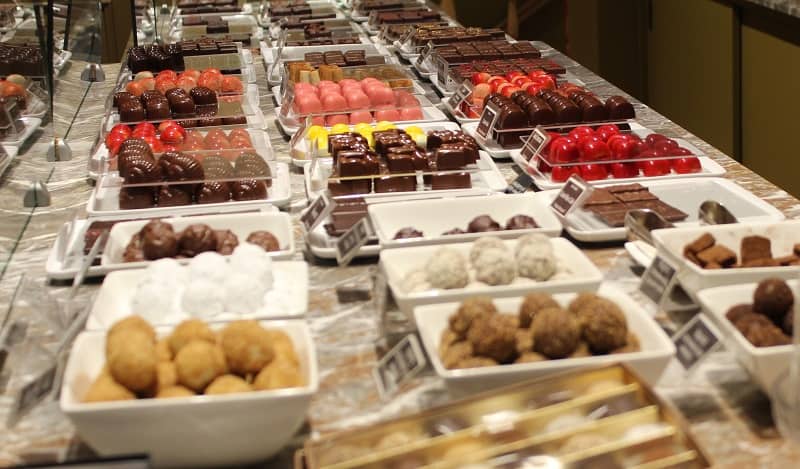
Jump To
What Are Bonbons? (Defining Chocolate Terms)
A bonbon is a chocolate shell filled with literally anything, usually a flavored ganache, caramel, or jelly. However in some parts of the world, 'bon bon' is used to refer to any type of small candy.
Similar to a bonbon, a truffle is chocolate-based, but a traditional truffle is just a ganache rolled in cocoa powder. The original chocolate truffles actually get their name from a fungus; they resembled the truffle mushrooms famously foraged from the Italian & French forests, and were blessed with the defining name 'chocolate truffle.'
For those hoping I'll define ganache, well, here you go: a ganache is basically an emulsion of cream & chocolate. There can be flavoring, such as vanilla, orange, mint, etc., and you could use a non-dairy cream, but a ganache must be based in chocolate.
The addition of the cream basically makes the chocolate more malleable, so it can be formed into balls and rolled in cocoa powder or another ingredient.

Another relatively popular version of ganache is in the form of pavé au chocolat. It's basically a box of cocoa powder-dusted ganache squares, usually eaten individually with a tiny fork. The Japanese chocolate company Royce has made pavés quite popular in Asia, but in Europe, the bonbon and the praline still rule benevolently.
Where a bonbon is a chocolate-based confection, a praline is merely a chocolate shell filled with something, anything that's sweet.
They're similar concepts, but you could find a praline filled with sweet cream or berry jam, whereas a bonbon would usually be filled with a chocolate-based flavoring or a layered center, cut and dipped in chocolate. The minute differences between some of these confections can be important, however.
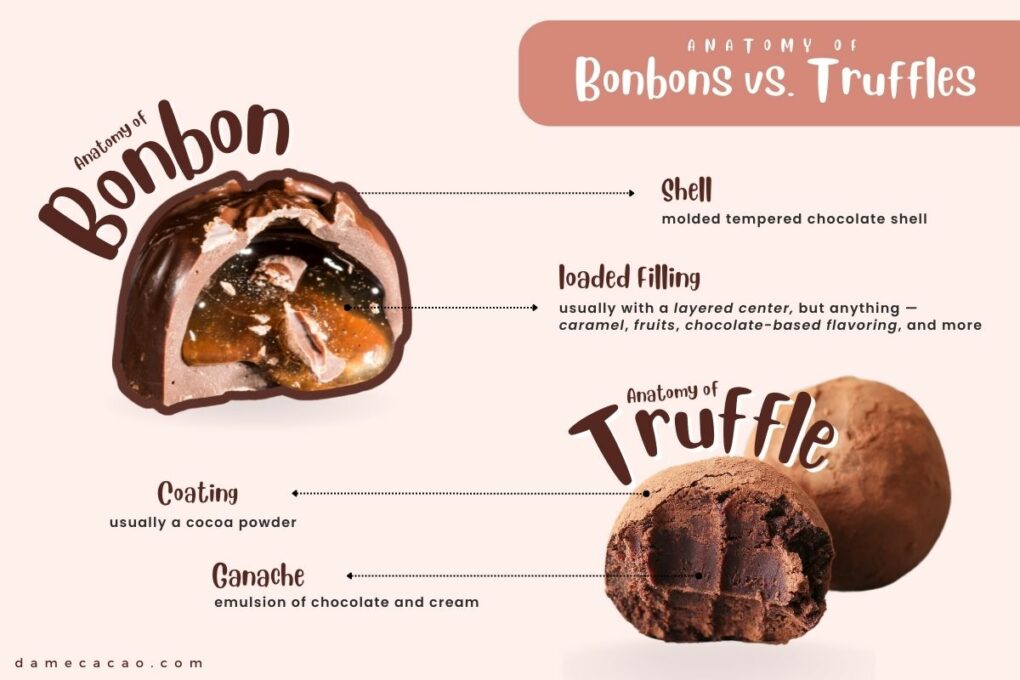
If you go to Belgium, for example, and call a bonbon a 'truffle,' you'll most likely be corrected on mere reflex. In France, as well, bonbons must legally contain at least 25% chocolate by weight, thus further distinguishing them from pralines.
But allow me to illustrate the differences with a popular example: caramel. A caramel ganache would be made with chocolate, liquid caramel, and some milk; it'd be smooth, sweet, and chocolaty. A caramel truffle would be a caramel ganache formed into balls, each one rolled in cocoa powder.
Caramel pralines are merely chocolate shells filled with caramel. But a caramel bonbon is usually a very thick chocolate shell filled with a caramel ganache or a plain ganache + a layer of caramel.
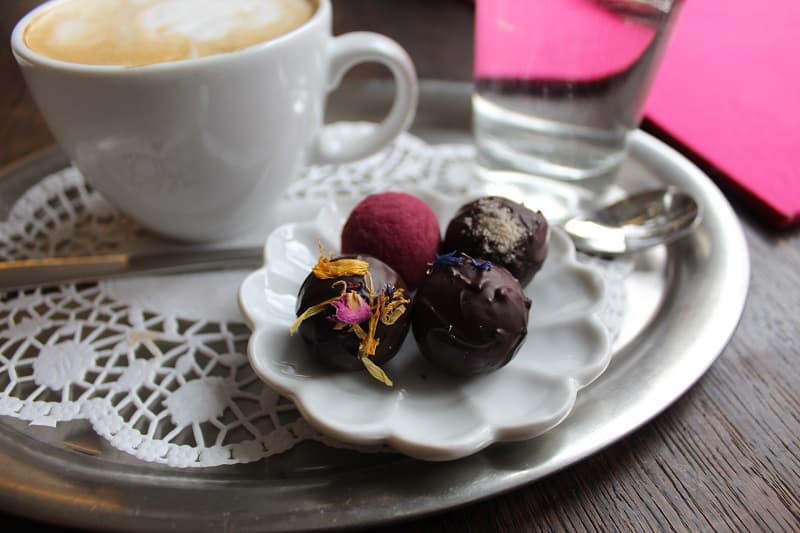
What’s The Difference Between A Chocolatier & A Chocolate Maker?
Put quite simply, the difference between a chocolatier and a chocolate maker is that one makes chocolate and the other makes chocolates. More specifically, a chocolate maker takes fermented & dried cacao beans, and generally cleans, roasts, peels, grinds, and refines those beans into chocolate.
This process (often called "bean to bar") means that the maker has more control over the sourcing of the raw material, though it takes days to complete each batch. Most chocolate makers still only make plain chocolate bars, though this is slowly shifting.
On the other hand, a chocolatier uses the chocolate made by a chocolate maker or a large manufacturer— which sometimes uses pre-ground cacao beans to make their chocolate— to make a variety of chocolates.
Examples of such chocolates are the bonbons and truffles and pralines discussed above; some of these creations are incredibly intricate and take hours to complete. Many modern bean to bar chocolate makers have begun making confections of their own, and even flavored chocolate bars.
But very few chocolatiers venture into the chocolate making realm. The fact that more bean to bar chocolate makers haven't started making bonbons and truffles speaks to the high level of skill needed for proper execution, as well as the type of chocolate needed.
A chocolatier uses couverture chocolate to make their creations, because it's less viscous, making it easier to manipulate, and it's also much less expensive than single origin bean to bar chocolate.
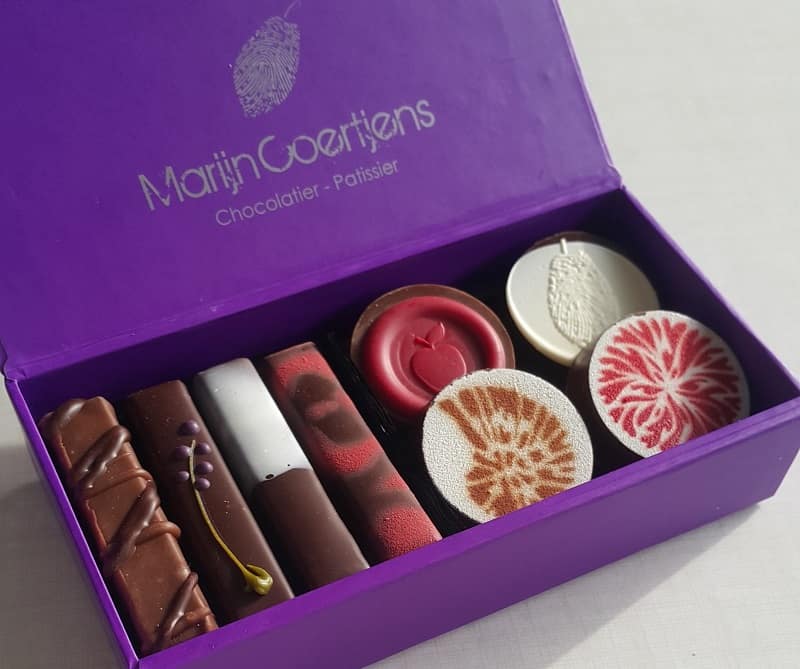
Types of Bonbons
There are lots of types of bonbons and pralines, beyond just white, milk, and dark; I'm talking beyond even the idea of origin chocolate, or craft chocolate. The variety of fillings has only expanded in recent years, as well, with chocolatiers popping up in every country around the world, experimenting with local flavors.
But the process of making bonbons remains the same: make chocolate shells, make the filling & add it to each shell, and then "bottom" each bonbon with another layer of chocolate to seal it. Here are some of the most common types of bonbons:
Ganaches
As described above, a ganache is an emulsion of chocolate & cream; it's that soft & creamy chocolate center most of us had in our first ever bonbons. This is still the most typical filling for a bonbon. While plain ganaches are common, even more common are flavored ganaches.
Those are made either by infusing the cream with something or by mixing the ingredient in directly. Flavored ganaches can range from simple lavender or peppermint to more complicated mixtures which add texture, such as roasted green tea with candied sesame seeds.

Fruit
While it's more common to find chocolate mixed with fruit purees, occasionally you'll run into a plain fruit-filled chocolate, with a touch of chocolate added just to keep it all together.
Liquor & fruit are often paired together so that the whole fruit can be preserved, such as in brandied cherries, because when they're soaked in liquor, over time the alcohol will replace the water content. Examples include rum-soaked mango, wine-infused pears, and whiskey cherries.
Caramel
Caramel centers range from super liquidy to a viscous toffee-like substance, but they're all sweet combinations of sugar and cream. Variations of caramel fillings can include fudge and fondant, though those strike me more as pralines than bonbons.
Similar to ganaches, the creams used to make caramels can be infused with all sorts of flavors (see above).
Nuts
More often than not, nut fillings are in the form of pastes, often mixed with chocolate. Nuts are such a traditional filling for bonbons that most of them have their own names, including gianduja, marzipan, and praline, each of which is popular in their own rights.
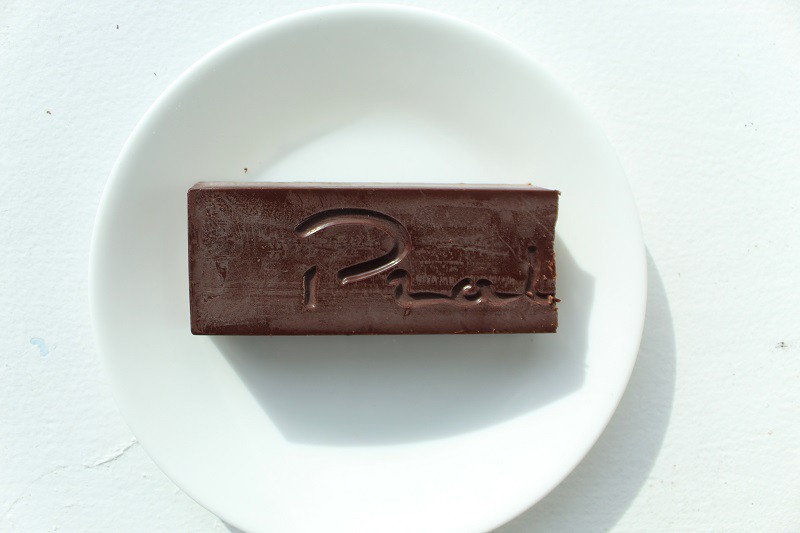
Layered Bonbons
This category is best described as a mixture of all of the above, though those are more common in cut bonbons (see below). A good bonbon will always have a thin chocolate shell, slightly thicker bottom, and balanced flavors with no air pockets.
There is a such thing as "cut" bonbons, in which the chocolatier makes a huge slab of something, often a nut butter or jelly or ganache, and then cuts the slab into squares & coats each piece in chocolate, but those are less common.
No matter what type of bonbon it is, however, look for pieces with no leaks or air bubbles on the outer shell. And remember— always ask questions. Someone has put a lot of love and time into making that sweet treat you're eyeing.
And no matter where you are, if the chocolatier doesn't want to answer questions about where their ingredients come from or their inspirations, then their chocolate's probably not worth your investment.
Only spend on quality chocolate (& chocolates), because not only is it better for the world, but, well, we all know how quickly a box of bonbons can disappear.

















Skye O’Malley
Beautiful writing, my Dear.
Max
Thank you! ^^